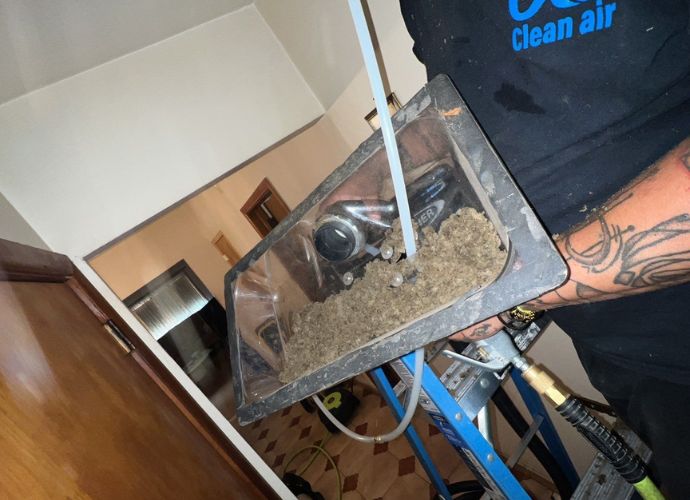Welcome to our comprehensive guide on air duct sealing! If you’re like most homeowners, your HVAC system is a crucial part of keeping your family comfortable and healthy year-round. However, even the best systems can experience air leaks, poor insulation, and other common problems that can reduce efficiency and increase energy bills. In this post, we’ll cover everything you need to know about identifying and fixing these common duct sealing problems in your home’s heating and cooling system. So let’s start improving your indoor air quality and saving money on utility costs!
Introduction to Air Duct Sealing and HVAC System Basics
Most homes have an HVAC system to keep the indoor temperature comfortable year-round. The home’s ductwork helps distribute conditioned air from your furnace or air conditioner throughout the house; gaps or leaks in your ductwork can cause your HVAC system to use more power and perform less efficiently, leading to higher energy bills and potentially even damage to your system.
Duct sealing is the process of sealing any gaps or leaks in your ductwork to improve the efficiency of your HVAC system. It is important to have your ductwork checked and sealed by a professional every few years or as needed if you notice any problems with your HVAC system.
There are several ways to seal ductwork, but the most common method is sealing with mastic. Mastic is a type of putty that adheres well to surfaces like metal, making it ideal for use on ducts. Once applied, mastic will harden and create a tight seal to prevent air from escaping through cracks and holes.
Suppose you have an older home with asbestos-containing materials (ACMs) in the ductwork. In that case, it is important to have these removed by a certified professional before attempting any repairs or sealing. Asbestos fibers release into the air when disturbed and cause serious health problems if inhaled.
Benefits of Properly Sealed Ducts
If you want your home’s heating and cooling system to work as efficiently as possible, it is important to ensure the ductwork is properly sealed. Leaky ducts can cause a significant decrease in the overall efficiency of your HVAC system, as well as increase your energy bills. In some cases, leaky ductwork may lead to health problems for you and your family.
There are many benefits of properly sealing your ductwork, which include the following:
- Improved Efficiency – When your ductwork is properly sealed, it will help your HVAC system to function more efficiently. This means you will use less energy to heat & cool your home, saving you money on your energy bills.
- Enhanced Air Quality – Leaky ducts allow dust, pollen, and other allergens into your home’s air supply. This can cause problems for people who suffer from allergies or respiratory issues. You can help improve your home’s air quality by sealing your ductwork.
- Extended Equipment Life – Another benefit of sealing your ductwork is that it can help extend the life of your HVAC equipment. When your system doesn’t have to work as hard to create a comfortable temperature in your home, it puts less wear and tear on the components of the system. This can add years to the lifespan of your furnace or air conditioner.
How to Inspect and Seal the Ductwork?
The ductwork in your home distributes hot and cooled air throughout the house. Over time, the ductwork can develop leaks, leading to reduced heating and cooling efficiency and increased energy costs. Inspecting and sealing the ductwork is a simple way to improve the efficiency of your HVAC system and reduce your energy bills.
To inspect the ductwork, start at the furnace or air handler. Follow the main supply duct to the first branch connection. Then, inspect all the branch connections and look for gaps or holes. Once you’ve identified any areas that need to be sealed, use mastic sealant or metal tape to seal the gaps or holes.
Common Problems with Ductwork and How to Fix Them?
If your ductwork is leaky, it can cause all sorts of problems for your HVAC system. The most obvious problem is that your system must work harder to keep your home at the preferred temperature, leading to higher energy bills. But leaks can also lead to reduced air flow, uneven heating and cooling, and increased dust and allergens in your home.
Luckily, there are a few things that one can do to fix common ductwork problems. First, ensure all your registers and grilles are properly sealed and attached. If they’re not, air can escape through them easily. You can also use sealant or tape to seal up the cracks or holes in your ductwork. Just be sure to use a product designed for HVAC use, so it won’t degrade over time.
If you have leaks in hard-to-reach places, like the attic or crawlspace, you may need to hire a professional to help you seal them. But in most cases, these simple tips should help solve your ductwork problems and improve the efficiency of your HVAC system.
Read More: A Guide on Preparing Your Property for Air Duct Cleaning
Conclusion
Air Duct sealing is a critical part of maintaining your HVAC system, as it can save you money on energy costs and prolong the life of your unit. We hope this article taught you some helpful tips on identifying common duct problems and fixing them yourself. If you have any further questions or need help finding the right products for your home project, please contact Alpha Clean Air at (888) 502-3828 anytime!





